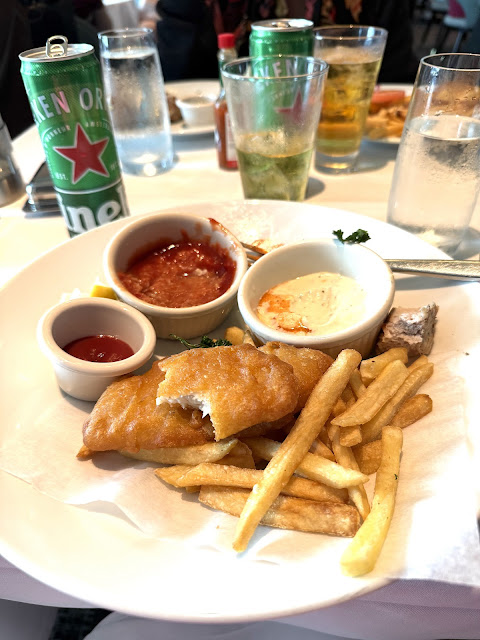 The first 18 years of my life was spent in Hawaii. Just before starting college, I flew to stay with my brother in Oxnard to work for the summer at the Naval Civil Engineering Laboratory in Port Hueneme, California. Oxnard is 60 miles north of Los Angeles.
The first 18 years of my life was spent in Hawaii. Just before starting college, I flew to stay with my brother in Oxnard to work for the summer at the Naval Civil Engineering Laboratory in Port Hueneme, California. Oxnard is 60 miles north of Los Angeles.
I do recall dining at Tadich Grill, which was then at 545 Clay Street in SFO. In 1967, it moved to its current location at 240 California Street. I have classmates still living in the city, and we tend to have lunch at Tadich Grill. Here is a 1961 menu.
- Around the mid-1960's with New York's Greenwich Village and Chicago's Old Town Community, SFO's Haight-Ashbury district led the way in popularizing hippies, a transition from beatnicks and the Beat Generation.
- Hippies were into psychedelic music, the sexual revolution and a variety of drugs, like marijuana and LSD to explore altered states of consciousness.
- Do your own thing, wherever you have to do it and whenever you want. Drop out. Leave society as you have known it. Leave it utterly. Blow the mind of every straight person you can reach. Turn them on, if not to drugs, then to beauty, love, honesty, fun.
- In 1966 there were 15,000 hippies living in Haight.
- Scott McKenzie's rendition of John Phillip's song, San Francisco, epitomized these times.
- All that led to summers of love in SFO's Golden Gate Park and the Monterey International Pop Festival, inspiring the 1969 Woodstock Festival.
- There seems to be a general sense that LGBTQ+ evolution began with the Hippies.
- Not so, for the Gold Rush era had an open culture.
- From World War II, there was an influx of blue tickets (those who were discharged for "undesirable habits" to SFO.
- Then, of course, the later 60's into the future showed the growth of Gay Pride, where San Francisco became the mecca.
- Market Street, more south than north, has had a history crime. Half a million people walk it every day, and what should have become the grand boulevard of a grand city has vacillated from dangerous to just decaying.
- So is SFO safe today?
- In a word, yes. Violent crime is low compared to New York City, Dallas, Seattle and Phoenix. Tourist spots are safe.
- Of course, like all large cities, there are neighborhoods to be avoided. Watch out in the Tenderloin, South of Market and certain areas of Civic Center and the Mission District. Especially at night.
- Plus, the homeless and drug use. Car break-ins are a real problem, being responsible for half the crimes.
- Is a safe place for the gay community. Especially in the Castro and Mission neighborhoods.
- More people died during pandemic of fentanyl overdoses than COVID-19.
- Earthquakes are possible, but wildfires are away from the city. Riptides at Ocean Beach.
- Avoid Golden Gate Park at night. Walking your dog there? Nope, there are coyotes at night.
- Downtown, like in other cities, have not yet recovered from the pandemic, and office vacancy is at an all-time high. Almost 50% of office building are not full.
- Many businesses, especially big retail moguls, have left town because of shoplifting.
- Tap water is safe.
- While BART or Muni are generally safe, avoid a car with no one else in it. Some cars are just accepted to be for drug dealings.
On my second assignment at LLNL I remember a colleague who worked with me asking me to join him for the first tasting of a red wine his family had brought in to the USA. He was a Callaway. In his garage we had a bottle, still with no label, of a Petite Sirah. This was 1979 and my wine in those days was something like Blue Nun. So of course the wine tasted terrible. This grape was over time moved to Paso Robles, and the cheapest bottle you can find of a Petite Sirah from there is $50. This is now where the best red wines are grown. Passed through there 20 times during my college days, and never stopped once. It is on my list of a must visit, perhaps next year.
There are now 200 wineries and 40,000 vineyards in Paso Robles.





















Comments
Post a Comment